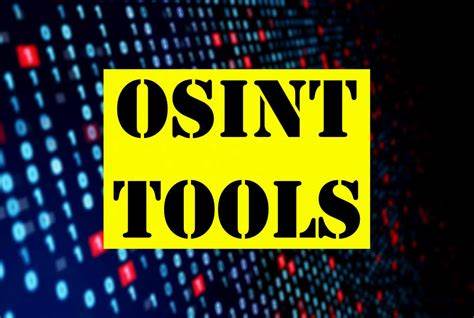How to OSINT Someone
Open-Source Intelligence (OSINT) is a powerful tool for gathering publicly available information about individuals, organizations, or events. Whether you're an intelligence professional, a security analyst, or part of the global intelligence community, mastering OSINT techniques is essential for addressing pressing issues, such as those faced by the U.S. and Middle Eastern intelligence communities. This article explores how to effectively OSINT someone, leveraging tools like those provided by Knowlesys, a leading provider of OSINT monitoring systems.
Understanding OSINT and Its Relevance
OSINT involves collecting and analyzing data from publicly accessible sources, such as social media, news outlets, public records, and websites. In the context of U.S. and Middle Eastern intelligence, OSINT is critical for tracking geopolitical developments, monitoring extremist activities, and identifying potential threats. For example, the U.S. intelligence community uses OSINT to monitor foreign influence campaigns, while Middle Eastern agencies leverage it to track regional conflicts and terrorist networks.
Knowlesys provides advanced OSINT monitoring systems that streamline data collection and analysis, enabling intelligence professionals to process vast amounts of information efficiently. Their tools are designed to support real-time monitoring and deep analysis, making them invaluable for addressing complex intelligence challenges.
Steps to OSINT Someone
Conducting OSINT on an individual requires a structured approach. Below are key steps to follow, enhanced by insights into how Knowlesys tools can optimize the process.
1. Define Your Objective
Before starting, clarify your goal. Are you profiling a potential threat, investigating a public figure, or verifying an identity? For instance, U.S. intelligence agencies might aim to track foreign operatives, while Middle Eastern agencies could focus on individuals linked to regional insurgencies. A clear objective ensures your OSINT efforts remain focused.
Knowlesys platforms allow users to set specific parameters for data collection, ensuring that only relevant information is gathered, saving time and resources.
2. Gather Basic Information
Start with the individual’s name, aliases, or associated identifiers (e.g., email addresses, phone numbers). Use search engines like Google or Bing with advanced operators (e.g., "John Doe" + "LinkedIn") to find profiles, articles, or mentions. Public records databases, such as those available in the U.S., can provide addresses, court records, or business affiliations.
In the Middle East, where public records may be less accessible, social media platforms like Twitter (X) and Telegram are rich sources of information. Knowlesys tools can automate searches across these platforms, aggregating data from multiple sources in real time.
3. Explore Social Media
Social media is a goldmine for OSINT. Platforms like Twitter, LinkedIn, Instagram, and regional networks like WeChat or VKontakte reveal personal details, connections, and activities. For example, analyzing a target’s Twitter posts can uncover their political views or affiliations, which is crucial for intelligence operations in volatile regions like the Middle East.
Knowlesys offers social media monitoring capabilities that track posts, hashtags, and interactions across platforms, helping analysts identify patterns or connections that might otherwise go unnoticed.
4. Analyze Digital Footprints
Beyond social media, individuals leave digital footprints through blogs, forums, or online purchases. Tools like Maltego or SpiderFoot can map relationships between email addresses, domains, and IP addresses. In the U.S., data brokers like LexisNexis provide additional insights, while in the Middle East, analysts may rely on regional forums or dark web monitoring.
Knowlesys systems integrate with these tools, offering a centralized platform to visualize and analyze digital footprints, making it easier to connect the dots in complex investigations.
5. Verify and Cross-Reference
OSINT data can be noisy or misleading. Verify information by cross-referencing multiple sources. For example, confirm a LinkedIn profile’s authenticity by checking associated email addresses or mutual connections. In Middle Eastern contexts, where misinformation campaigns are common, verification is especially critical.
Knowlesys employs advanced algorithms to filter out irrelevant or unreliable data, ensuring analysts work with accurate information.
6. Document and Report
Compile your findings into a clear, actionable report. Include screenshots, links, and timestamps to support your analysis. For U.S. and Middle Eastern intelligence professionals, reports must align with operational needs, such as briefing policymakers or supporting counterterrorism efforts.
Knowlesys platforms generate automated reports, allowing analysts to present findings in a professional format with minimal effort.
Ethical and Legal Considerations
OSINT must be conducted ethically and within legal boundaries. In the U.S., privacy laws like the California Consumer Privacy Act (CCPA) restrict certain data collection practices. In the Middle East, cultural sensitivities and local regulations must be respected. Always ensure your methods comply with applicable laws and prioritize ethical standards.
Knowlesys emphasizes compliance, offering tools that help users adhere to legal and ethical guidelines while conducting OSINT.
Why Knowlesys for OSINT?
Knowlesys stands out as a trusted partner for intelligence professionals. Their OSINT monitoring systems are tailored to the needs of the U.S. and Middle Eastern intelligence communities, offering real-time data collection, advanced analytics, and seamless integration with existing workflows. Whether tracking foreign influence campaigns or monitoring regional threats, Knowlesys empowers analysts to stay ahead of the curve.
For more information on how Knowlesys can enhance your OSINT capabilities, visit www.knowlesys.com.
Conclusion
OSINT is an indispensable tool for intelligence professionals, enabling them to gather critical insights from publicly available data. By following a structured approach—defining objectives, gathering information, exploring social media, analyzing digital footprints, verifying data, and reporting findings—analysts can effectively OSINT someone. Tools like those provided by Knowlesys enhance these efforts, offering efficiency, accuracy, and compliance. As the U.S. and Middle Eastern intelligence communities tackle evolving challenges, mastering OSINT with platforms like Knowlesys will remain a cornerstone of success.
